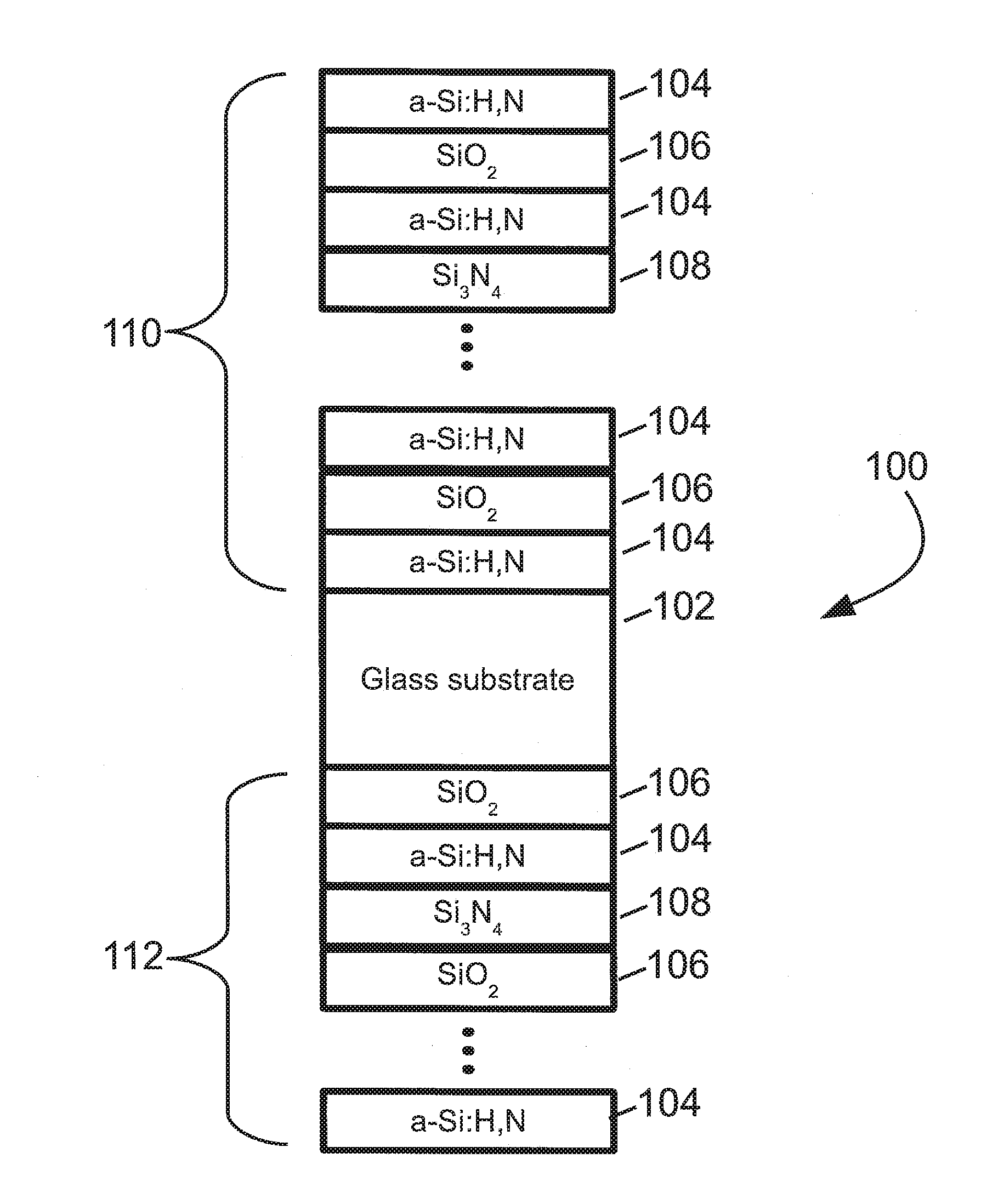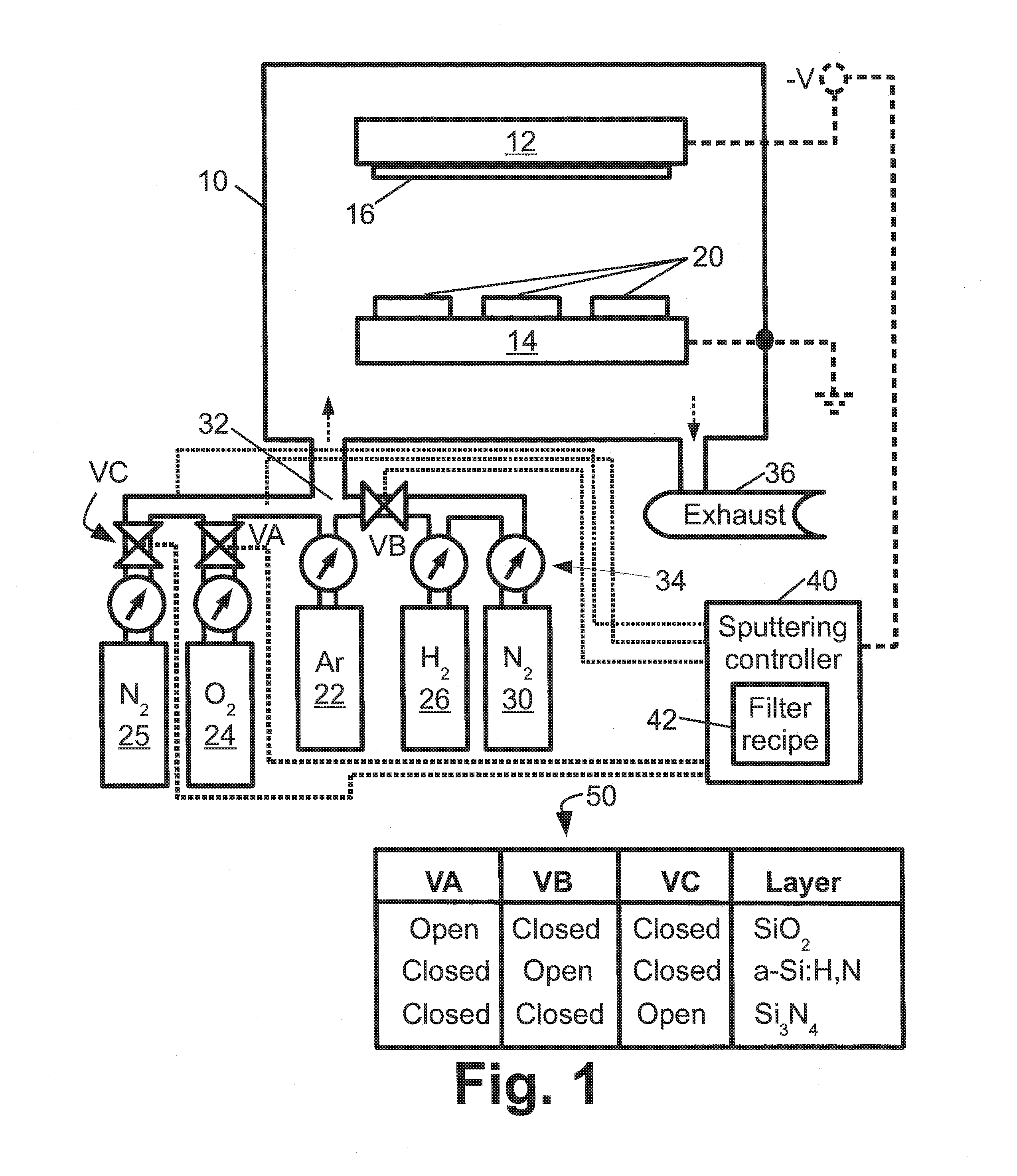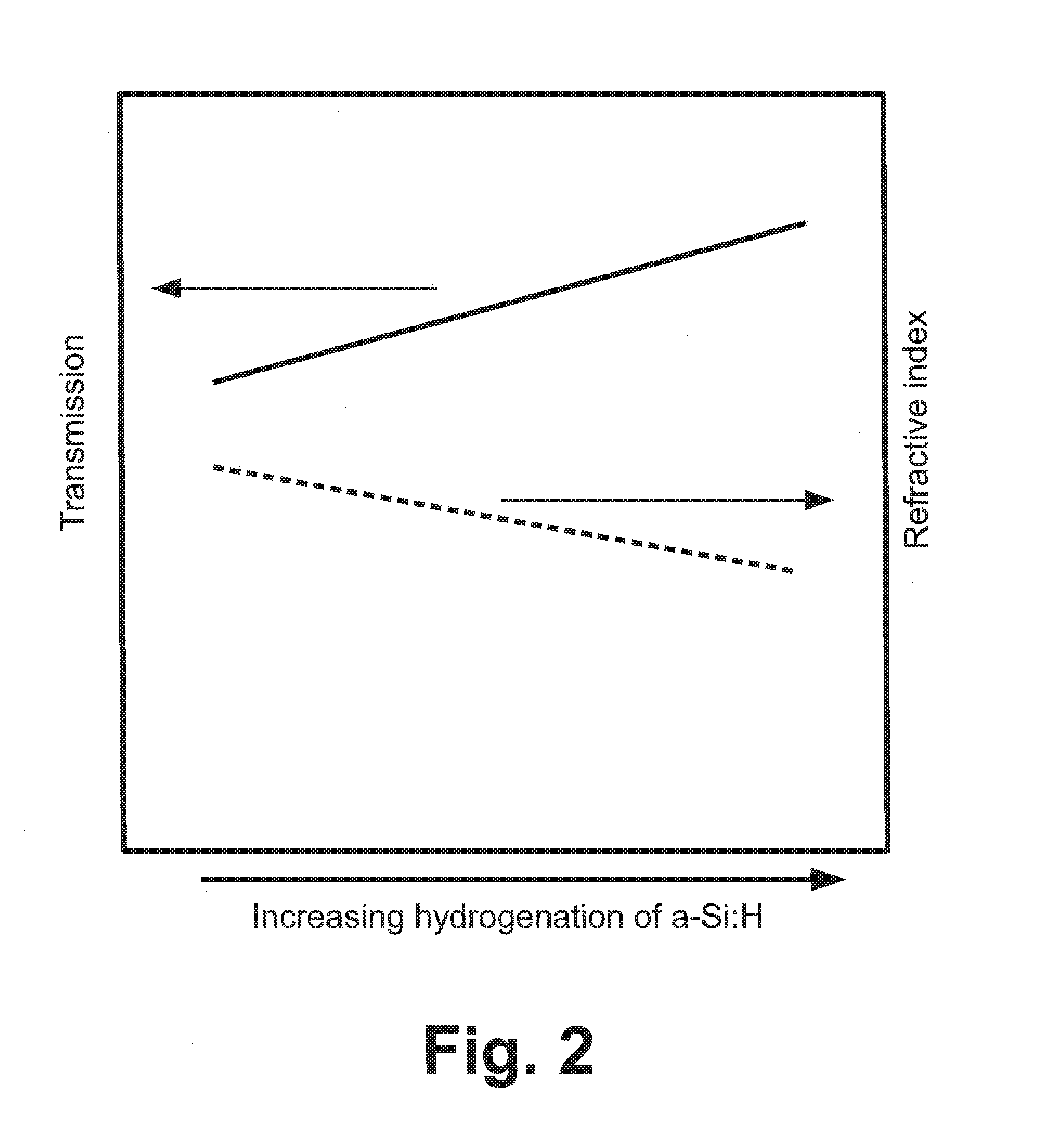Near infrared optical interference filters with improved transmission
a technology of optical interference filter and transmission, applied in the field of optical arts and optical filter arts, can solve the problem of limiting the useful bandwidth of the filter by the amount of angle shi
- Summary
- Abstract
- Description
- Claims
- Application Information
AI Technical Summary
Benefits of technology
Problems solved by technology
Method used
Image
Examples
Embodiment Construction
[0014]As previously noted, an interference filter comprising a stack of layer units with hydrogenated silicon (a-Si:H) layers is used for operation in the near infrared (800-1250 nm), because the hydrogenation of the silicon decreases the absorption losses (both from intrinsic silicon and disorder induced) sufficiently to provide acceptable filter transmission characteristics in the passband. With brief reference to FIG. 2, it is recognized herein that this approach for the near-infrared has a substantial disadvantage. As seen in diagrammatic FIG. 2, for a fixed wavelength in the infrared (e.g. in the range 800-1100 nm), increasing hydrogenation of the a-Si:H (that is to say, increasing the hydrogen content of the a-Si:H) does decrease the loss—however it also decreases the refractive index of the a-Si:H as diagrammatically depicted in FIG. 2.
[0015]The performance of narrow band interference filters for high numerical aperture optical systems is a compromise between obtaining high t...
PUM
| Property | Measurement | Unit |
|---|---|---|
| Fraction | aaaaa | aaaaa |
| Fraction | aaaaa | aaaaa |
| Fraction | aaaaa | aaaaa |
Abstract
Description
Claims
Application Information
 Login to View More
Login to View More - R&D
- Intellectual Property
- Life Sciences
- Materials
- Tech Scout
- Unparalleled Data Quality
- Higher Quality Content
- 60% Fewer Hallucinations
Browse by: Latest US Patents, China's latest patents, Technical Efficacy Thesaurus, Application Domain, Technology Topic, Popular Technical Reports.
© 2025 PatSnap. All rights reserved.Legal|Privacy policy|Modern Slavery Act Transparency Statement|Sitemap|About US| Contact US: help@patsnap.com



